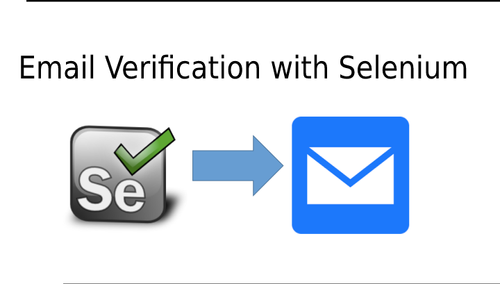In today's digital landscape, web applications often require users to enter and validate their email addresses. Whether you're building a registration form, a subscription service, or any other online functionality, ensuring that users provide valid email addresses is critical. That's where Selenium, the powerful automation tool, comes into play. In this comprehensive guide, we'll explore how to use Selenium to perform email validation effectively. Whether you're a seasoned developer or new to automation testing, this guide will equip you with the skills to handle email validation seamlessly.
Understanding the Importance of Email Validation
Before we delve into the nitty-gritty of using Selenium for email validation, let's first understand why email validation is crucial.
Data Quality: Validating email addresses ensures that your database contains accurate and usable information. This is essential for maintaining data quality and making informed decisions.
User Experience: For users, it's frustrating to encounter errors or issues when entering their email addresses. Email validation helps create a smoother and more user-friendly experience.
Security: Properly validated email addresses can prevent spammy or malicious accounts from infiltrating your system.
Efficiency: Valid email addresses mean fewer bounces and failed communication attempts, saving both time and resources.
Email Validation with Selenium: Step by Step
Now that you understand why email validation is essential, let's walk through the process of implementing it using Selenium.
1. Setting Up Your Selenium Environment
Before you can start validating email addresses, you need to set up your Selenium environment. This typically involves installing the Selenium WebDriver and configuring it for your preferred programming language (e.g., Java, Python, C#).
2. Locating the Email Input Field
The first step in email validation is locating the input field where users enter their email addresses. Selenium provides various methods for locating elements on a web page, such as find_element_by_id, find_element_by_name, find_element_by_xpath, and more. Choose the most appropriate method for your application.
3. Inputting Email Addresses
Once you've located the email input field, you can use Selenium to input email addresses for validation. You can simulate user input by using the send_keys method to populate the input field.
4. Triggering Validation
Depending on your web application, email validation might occur automatically when a user submits the form, or it may require manual initiation, such as clicking a "Validate" button. Use Selenium to trigger the validation process as required.
5. Capturing Validation Results
After triggering validation, you need to capture the results to determine whether the email address is valid or not. This could involve checking for error messages, examining response codes, or parsing the page for validation status.
6. Making Validation Decisions
Based on the captured validation results, you can decide how to handle invalid email addresses. This may involve displaying error messages to the user, preventing form submission, or taking other appropriate actions.
Common Challenges and Best Practices
While email validation with Selenium can be highly effective, it comes with its own set of challenges and best practices.
1. Handling Asynchronous Validation: Some web applications perform email validation asynchronously, which means you need to wait for the validation process to complete before capturing the results. Use Selenium's explicit and implicit waits to handle such scenarios.
2. Regular Expression Validation: Many email validation processes rely on regular expressions to ensure the email address's format is correct. Familiarize yourself with the relevant regex patterns for email validation.
3. Avoid Overloading the Server: When testing email validation, be mindful not to overload the server with too many requests. This can trigger security measures or cause performance issues. Use test accounts or limit the rate of validation requests.
4. Handling Edge Cases: Consider edge cases, such as international email addresses with non-standard characters or domain names. Your validation logic should accommodate these scenarios.
FAQs about Email Validation in Selenium
Q1. Can I use Selenium for email validation in any programming language?
A1. Yes, Selenium supports various programming languages like Java, Python, C#, and more. You can choose the language that best suits your project.
Q2. What if the email validation process involves CAPTCHA?
A2. Handling CAPTCHA in Selenium can be challenging. You may need to integrate third-party CAPTCHA-solving services or use headless browsers.
Q3. Is email validation with Selenium suitable for automated testing in CI/CD pipelines?
A3. Yes, Selenium can be integrated into CI/CD pipelines to automate email validation as part of your testing process.
Q4. Are there any open-source libraries or frameworks that simplify email validation with Selenium?
A4. While there are no specific libraries for email validation, Selenium itself provides powerful tools for web automation.
Q5. Can Selenium handle email validation for mobile applications?
A5. Yes, Selenium can be used to automate email validation for mobile applications as well, using frameworks like Appium.
In conclusion, mastering email validation in Selenium is a valuable skill for web developers and testers. It ensures the accuracy of user data, enhances user experience, and contributes to the security and efficiency of your web applications. By following the steps outlined in this comprehensive guide and being aware of common challenges and best practices, you can harness the full potential of Selenium for email validation and elevate the quality of your web applications.



